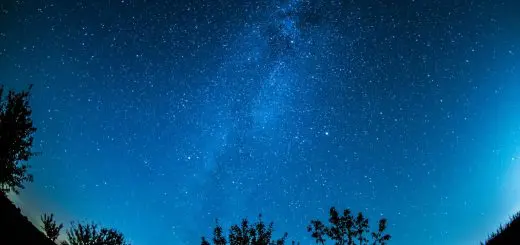How to Help Save Endangered Wildlife Locally

Looking for more amazing products? Check out our online store and explore our collection here! Happy shopping!
Before diving in, please note: This post is for informational purposes only. If you’d like to know more about how we approach topics, feel free to check out our friendly Disclaimer Page.
Hey there, amazing readers! 
We’re committed to delivering quality posts, and your support (even just sticking around despite the ads) means everything to us. So, bear with us, and thanks for helping us keep the good vibes rolling. Now, on to the fun stuff!
TRANSLATE BUTTON AT THE END OF THE ARTICLE
A Quick Overview
Saving endangered wildlife isn’t just a job for scientists and conservationists; it’s a task we can all get behind.
Whether you live in a bustling city or a quiet town, local wildlife faces challenges every day.
Pollution, habitat loss, and climate change all threaten the survival of species that share our environment.
But here’s the good news: We have the power to make a positive impact in our communities and help protect these vulnerable animals.
In this guide, I’ll walk you through practical steps we can take to support endangered wildlife right where we live.
Understanding the Importance of Local Wildlife Conservation
Wildlife conservation is essential for maintaining the balance of our ecosystems.
Each species plays a role, contributing to the health of our environment.
For instance, bees pollinate plants, while birds help control insect populations.
When we lose a species, we disrupt this balance, leading to unpredictable changes in our ecosystem.
Think about the local streams and forests.
They aren’t just pretty places; they’re vital habitats for various plants and animals.
Conserving wildlife means preserving these habitats too.
It’s about protecting the spaces where animals find food, shelter, and safety.
Moreover, local wildlife contributes to our quality of life.
Many people find joy in birdwatching or hiking and connecting with nature.
The presence of diverse wildlife enhances our community’s beauty and makes it a healthier place to live.
Let’s not forget the educational aspect.
By engaging in conservation, we can learn more about our environment and share that knowledge with others.
This promotes a greater awareness of the importance of wildlife, fostering a culture of care and responsibility.
Lastly, local wildlife conservation can have economic benefits.
Ecotourism thrives in areas rich in biodiversity.
Protecting these species can lead to increased tourism, providing jobs and support for local businesses.
Recognizing Endangered Species in Your Community
The first step in helping endangered wildlife is knowing what’s at stake.
Take a moment to research which species in your area are at risk.
Many communities have local endangered species lists, often maintained by wildlife agencies.
Here’s how to start recognizing endangered species:
Visit Local Nature Centers: These places often have information about local wildlife, including endangered species.
They might even host talks or workshops.
Engage with Online Resources: Websites like the U.S.
Discover "Dog Care: Learning How to Care for Your Furry Friend
"
Fish and Wildlife Service provide lists of endangered species by region.
Join Citizen Science Projects: These initiatives often focus on tracking local wildlife populations and can help you learn more about the species in your area.
Once you’re informed, keep an eye out for these species during your walks or hikes.
You might spot a rare bird or a unique plant.
Remember, even seemingly common animals can be endangered; it’s all about understanding their specific needs and challenges.
Simple Ways to Educate Yourself and Others
Education is key to effective conservation.
Start by reading books or watching documentaries about local wildlife and conservation efforts.
Documentaries can be eye-opening, showing the challenges animals face and the people working to help them.
Consider these methods for spreading awareness:
Social Media: Share articles, videos, and photos of endangered species.
Use platforms like Facebook, Instagram, or Twitter to raise awareness.
Host a Local Wildlife Night: Invite friends and family over for a casual evening of learning.
Watch documentaries, discuss endangered species, and brainstorm action steps together.
Start a Book Club: Focus on conservation-themed literature.
This can build community and foster engaging discussions.
The more we know, the better equipped we are to take action.
Sharing information not only educates others but also inspires collective action.
Engaging with Local Environmental Organizations
Connecting with local environmental organizations can amplify your efforts.
These groups often have resources, knowledge, and volunteer opportunities that can enhance your conservation efforts.
Here’s how to get involved:
Attend Meetings and Events: Many organizations host events open to the public.
This is a great way to meet like-minded individuals and learn about local issues.
Volunteer Your Skills: Whether you’re a graphic designer, writer, or good with social media, your skills can help these organizations amplify their message.
Become a Member: Joining an organization can provide you with valuable resources and updates on local conservation efforts.
One of my favorite experiences was volunteering for a local wildlife organization’s awareness campaign.
I gained insights into endangered species and made some great friends who share my passion!
Creating a Wildlife-Friendly Habitat at Home
I once turned my backyard into a mini wildlife sanctuary, and it’s been a rewarding experience.
Simple changes can attract local wildlife and provide them with a safe haven.
Here are some practical tips:
Plant Native Species: Native plants attract local pollinators and provide food for local animals.
Research plants that thrive in your area.
Create Water Sources: Birds and other wildlife need fresh water.
Consider installing a birdbath or a small pond.
Avoid Chemicals: Pesticides and herbicides can harm local wildlife.
Opt for organic gardening methods instead.
These changes don’t just help wildlife; they can beautify your home and offer you a peaceful space to enjoy nature!
Participating in Community Clean-Up Events
Trash is a significant threat to wildlife, often leading to injuries or death.
Participating in community clean-ups is a straightforward way to help.
Plus, it’s a fantastic opportunity to meet others who care about the environment.
Here are some ways to get involved:
Join Local Clean-Up Groups: Many towns have regular clean-up events along parks, rivers, or beaches.
Organize Your Own Event: Rally friends, family, or neighbors to clean up a local area that needs attention.
Promote Eco-Friendly Practices: Encourage recycling and waste reduction in your community to minimize litter.
I remember after one clean-up, we spotted several animals returning to areas we cleaned.
It was a tangible reminder of the impact we can have!
Advocating for Sustainable Practices and Policies
Becoming an advocate for sustainable practices is crucial.
It’s not just about individual actions; it’s about influencing broader change.
Here’s how to get started:
Contact Local Representatives: Write to your local leaders expressing support for conservation policies.
Politicians often pay attention to constituents who voice their concerns.
Support Sustainable Businesses: Shop local and choose eco-friendly products.
Your purchases directly impact which businesses thrive.
Promote Renewable Energy: Advocate for renewable energy sources in your community, reducing the overall carbon footprint.
Engaging in advocacy may seem daunting, but every little bit helps.
Plus, it can be quite empowering to see your efforts lead to tangible change.
How to Support Local Wildlife Rescue Efforts
Wildlife rescue organizations play a crucial role in rehabilitating injured or orphaned animals.
Supporting these efforts can significantly impact local wildlife.
Here’s how you can contribute:
Donate: Monetary donations to local wildlife rescues can help with food, medical care, and shelter for animals in need.
Adopt a Rescue Animal: If you’re in a position to do so, consider adopting a rescued animal.
This not only gives them a second chance but also raises awareness of the rescue’s work.
Spread the Word: Sharing information about local rescues and their needs can encourage others to get involved.
I often check in with my local wildlife rescue to see what they need.
Last time, it was as simple as sharing their fundraising campaign on social media, and it made all the difference.
Volunteering Your Time for Conservation Projects
If you want to dive in deeper, volunteering for conservation projects is a fantastic way to make a significant impact.
Organizations are often looking for passionate individuals to help with various tasks.
Consider these volunteering opportunities:
Habitat Restoration: Join teams working to restore local habitats by planting native species, removing invasive plants, or cleaning up natural areas.
Wildlife Monitoring: Help track local species, contributing valuable data to scientists and conservationists.
Educational Outreach: Assist in teaching others about the importance of wildlife conservation at schools or community events.
Volunteering has been one of the most enriching experiences of my life.
It has deepened my connection to local wildlife and allowed me to contribute actively.
Fundraising for Wildlife Preservation Initiatives
Fundraising for wildlife initiatives can provide critical funds for conservation projects.
Whether it’s a small bake sale or a larger community event, every little bit counts.
Here’s how you can help:
Organize Events: Host a trivia night, auction, or a local concert to raise funds for wildlife initiatives.
Utilize Online Platforms: Crowdfunding sites make it easy to start fundraising campaigns for specific wildlife causes.
Partner with Local Businesses: Many businesses are willing to support local causes.
Create partnerships where a portion of sales goes to wildlife efforts.
I once helped organize a local 5K run for wildlife preservation, and we raised quite a bit for a nearby sanctuary.
Plus, it brought the community together in a fun way!
Enjoying Nature: Eco-Friendly Activities to Try
Getting outside can be both enjoyable and beneficial for wildlife.
Eco-friendly activities not only promote personal well-being but also encourage conservation.
Here are some eco-friendly activities to consider:
Nature Walks: Explore local parks and nature reserves.
Bring a notebook to record your observations about local wildlife.
Birdwatching: Grab some binoculars and a field guide.
This activity can deepen your appreciation for local bird species.
Photography: Capture images of local wildlife, then share them on social media to raise awareness.
Spending time in nature has a way of recharging our spirits.
Plus, the more we appreciate it, the more likely we are to protect it.
Spreading Awareness: Share Your Conservation Journey
Your personal journey in wildlife conservation can inspire others.
Sharing your experiences is one of the most impactful ways to raise awareness.
Here’s how you can do this:
Social Media: Post updates about your conservation efforts.
Include pictures and stories to engage your audience.
Blogging: Consider starting a blog to document your experiences, share tips, and encourage others to join in.
Host Workshops: Share your knowledge with others through community workshops on topics like creating wildlife-friendly habitats or local endangered species.
One of my friends started a blog about her wildlife gardening experiences, and it attracted a community of fellow nature lovers.
It’s been a fantastic way to inspire others to get involved!
Conclusion
Helping to save endangered wildlife locally is an achievable and rewarding mission.
Whether it’s through education, volunteering, advocacy, or simply enjoying and appreciating nature, each action adds up.
Together, we can create a healthier planet for all species.
Let’s roll up our sleeves and dive in; our local wildlife needs us, and we have the power to make a difference.
So, let’s embark on this journey together, one step at a time!

The Enlightenment Journey is a remarkable collection of writings authored by a distinguished group of experts in the fields of spirituality, new age, and esoteric knowledge.
This anthology features a diverse assembly of well-experienced authors who bring their profound insights and credible perspectives to the forefront.
Each contributor possesses a wealth of knowledge and wisdom, making them authorities in their respective domains.
Together, they offer readers a transformative journey into the realms of spiritual growth, self-discovery, and esoteric enlightenment.
The Enlightenment Journey is a testament to the collective expertise of these luminaries, providing readers with a rich tapestry of ideas and information to illuminate their spiritual path.
Our Diverse Expertise
While our primary focus is on spirituality and esotericism, we are equally passionate about exploring a wide range of other topics and niches 

To ensure we provide the most accurate and valuable insights, we collaborate with trusted experts in their respective domains 
Our blog originally focused on spirituality and metaphysics, but we’ve since expanded to cover a wide range of niches. Don’t worry—we continue to publish a lot of articles on spirituality! Frequently visit our blog to explore our diverse content and stay tuned for more insightful reads.
Hey there, amazing reader! 
Check out our store here and take a peek at some of our featured products below! Thanks for being awesome!











